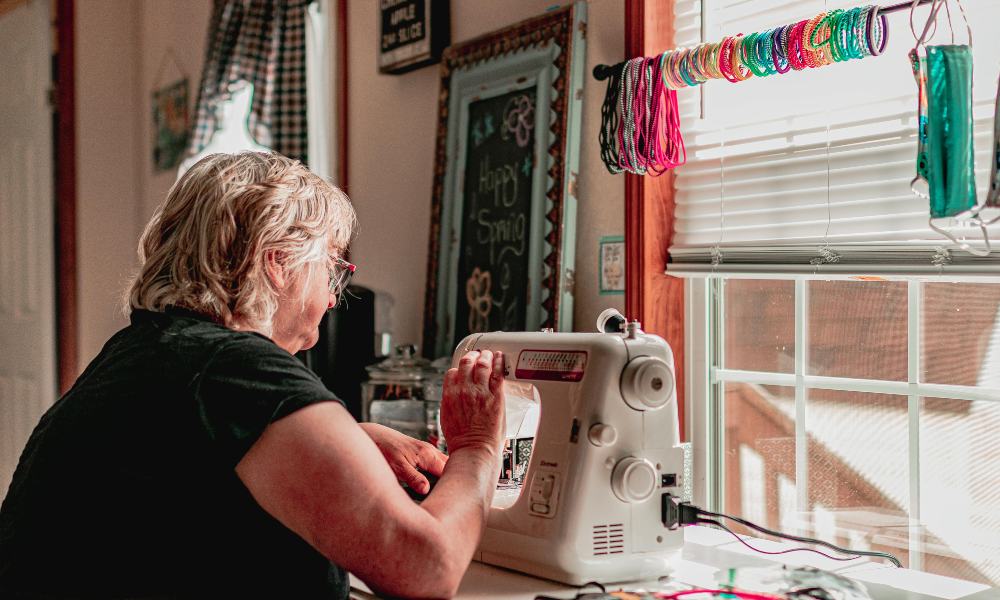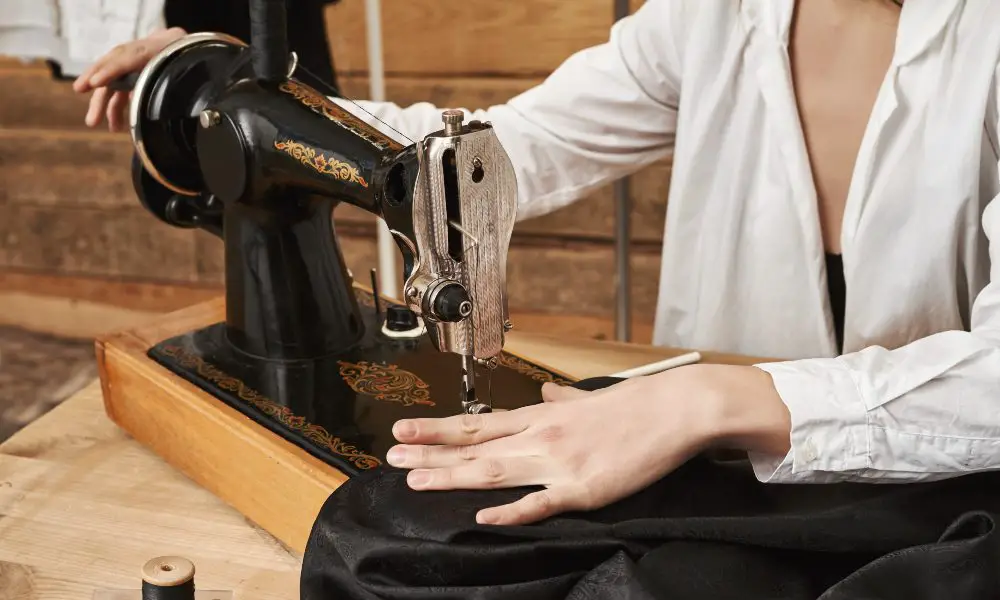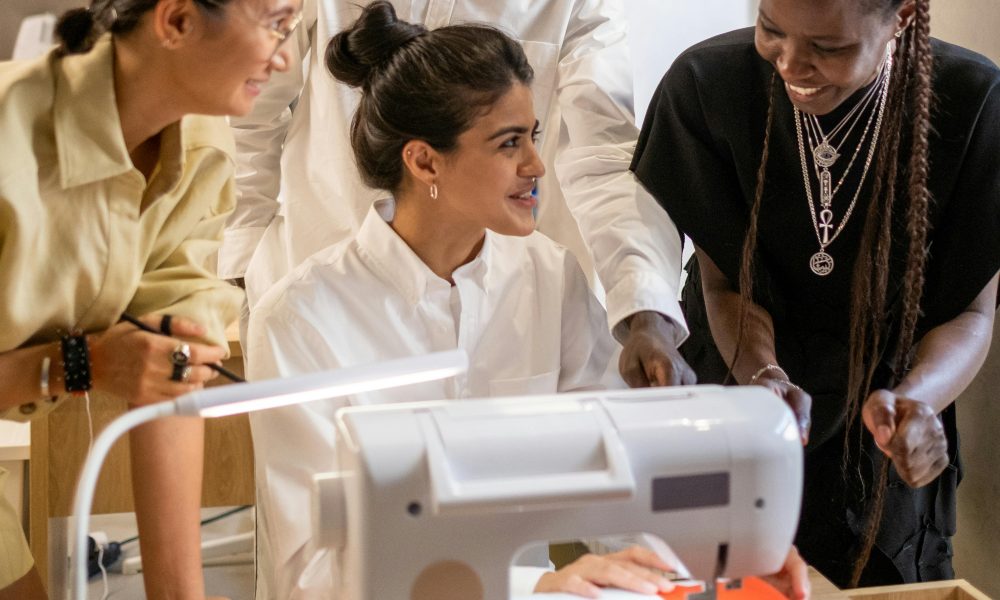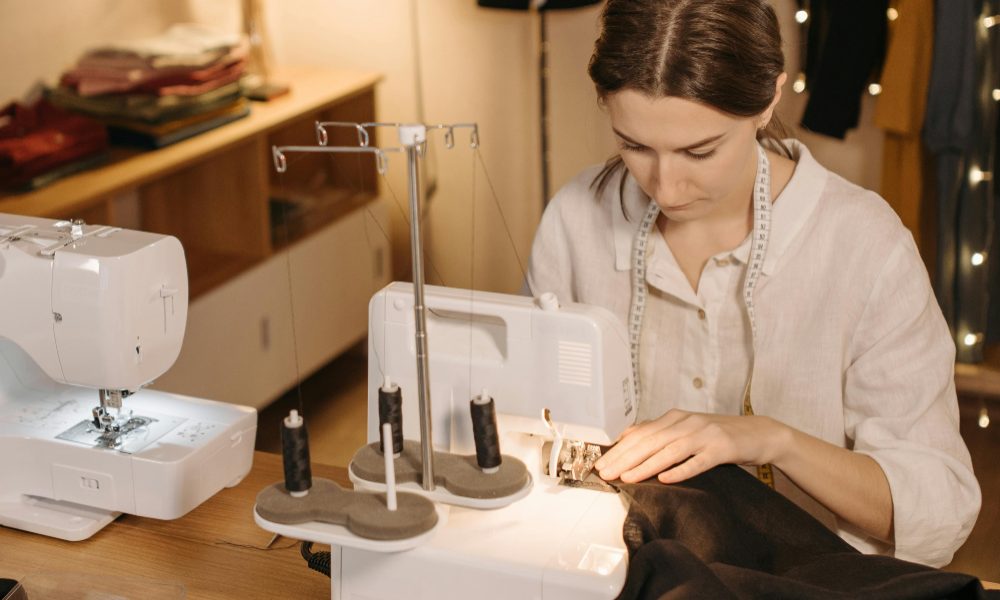Handheld sewing machines offer a compact and portable solution for quick repairs, small projects, and on-the-go sewing needs. Follow these simple steps to master using this nifty tool:
- Gather your materials and set up the machine
- Thread the needle and bobbin properly
- Prepare and stabilize the fabric
- Adjust the tension and stitch settings
- Practice on scrap fabric first
- Sew slowly, guiding the fabric smoothly
- Finish with backstitching for secure seams
Ready to tackle your next sewing project with ease? Let’s get started!
Understanding Your Handheld Sewing Machine
While compact, handheld sewing machines pack a surprising punch in features and capabilities. Before diving in, take a moment to familiarize yourself with the key components:
Machine Parts and Accessories
- Needle and presser foot
- Bobbin case and thread guides
- Tension and stitch length/width dials
- Fastening plate or free arm
- Foot pedal or power switch (depending on model)
Most handhelds come with a few basic accessories like extra bobbins, needles, and a small screwdriver for maintenance. Refer to your machine’s instruction manual for a full overview of included parts and their functions.
Choosing the Right Needle and Thread
Just like conventional machines, handheld models require the appropriate needle and thread for different fabric types. Use a universal or sharp needle for woven fabrics, and a ballpoint needle for knits to prevent skipped stitches. Match the thread weight to the fabric – lightweight thread for delicate fabrics, and heavier thread for denim or upholstery.
Setting Up for Success

Properly preparing your materials and adjusting the machine settings are crucial steps for achieving professional-looking stitches.
Threading Made Simple
Most handheld models follow a similar threading path, but always consult your manual for specific guidance. Once the bobbin is wound and inserted, bring the needle and bobbin threads together before threading the needle – this handy trick makes the process much smoother.
Fabric Preparation and Stabilization
Iron or press the fabric to remove wrinkles, then use stabilizers, interfacing, or temporary spray adhesive for stretch or lightweight materials. Pin or baste the pieces together, allowing enough space around the edges for the handheld machine to maneuver comfortably.
Adjusting Tension and Stitch Settings
Adjust the top tension to your fabric weight – tighter for delicate fabrics, looser for heavier materials. Set the desired stitch length and width, keeping in mind that shorter, tighter stitches work best for lightweight or delicate projects.
Mastering Sewing Techniques
Now that your materials are prepped and the machine is set up, it’s time to start stitching! Here are some tips for smooth, professional results:
- Guide the fabric slowly and evenly under the needle, using both hands
- Pivot or lift the presser foot to maneuver tricky positioning
- Use the free arm for sewing cylindrical pieces like sleeves or trouser legs
- Finish seams with backstitching or a locking stitch
Project Ideas for Portable Sewing
The true beauty of handheld sewing machines lies in their portability and versatility. From quick fixes to creative crafts, these little powerhouses can handle it all:
- Hemming skirts, pants, or curtains
- Repairing seams, adding patches, or appliques
- Sewing tote bags, coin purses, or simple home decor
- Embroidery or free-motion quilting on smaller pieces
As you gain confidence, feel free to experiment – the possibilities are endless with this compact sewing companion by your side.
FAQs
How do I handle thick fabrics or multiple layers?
Go slowly, using the handwheel to manually advance the fabric through tight spots. A specialized denim or leather needle may also be required for very thick materials.
Can I use a handheld machine for free-motion sewing or quilting?
Absolutely! The freedom of movement makes handheld sewing machines ideal for free-motion techniques on smaller projects or quilt blocks.
My stitches are uneven or skipping – what could be wrong?
Check your tension settings, ensure the bobbin is appropriately threaded and unwinding smoothly, and consider using a stabilizer or adjusting the presser foot pressure.
How do I clean and maintain my handheld machine?
Refer to your manual for specific guidance, but generally, use a soft brush to remove lint regularly and oil moving parts periodically with sewing machine oil.
***
Ready to take your sewing skills on the road? A handheld machine is the perfect portable companion for all your stitching needs – from quick repairs to creative crafting. What sewing project will you tackle first?
***
Main image: freepik




